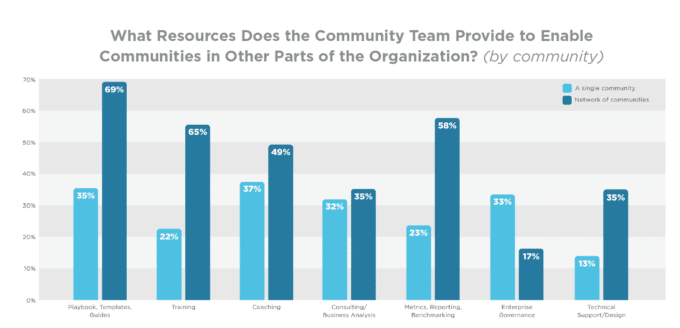Community managers are often connectors by default – it takes a certain type of person to excel at the role. People with high EQ tend to thrive.
Our research has shown that community leaders with a network of communities are more likely to provide enabling resources to their organization than those with a single community. Comparing the data from respondents who reported “one community” vs. “a network of communities” at their organization, we found a dramatic increase in CoEs once a network exists (i.e., once they’re past the initial use case).
Also interesting, 17% of respondents (8% in a network of communities) reported only ad hoc/informal governance. (Question: Who’s in charge of the communities there? If this is you, please contact us. We want to feature you in a case study.)

It’s interesting to note that 30% of community managers who represent a single community provide none of the resources mentioned in the survey, which likely results in a less strategic initiative. For those who want to grow beyond a single community, get out there and coach/evangelize!
Some common use cases to extend the reach and the benefit in your organization include:
- General employee communities for knowledge sharing and collaboration
- Customer support communities for providing fast, inexpensive, always-on access to answers to product and service questions.
- Membership communities for groups like students, patients, alumni, or association audiences
Tips on Getting Started
- Start a monthly “community jam” for those who want to learn more about community and how it might help them with a specific business use case.
- Coach executives on how they can best support your work — try to get them to an “aha moment” on how community approaches could help another area of the business.
- Document what has or hasn’t worked in your community, and begin compiling templates, and (ultimately) a community playbook for your organization.
It may feel overwhelming when you consider it, but by taking an iterative approach you’ll get where you want to be faster.
